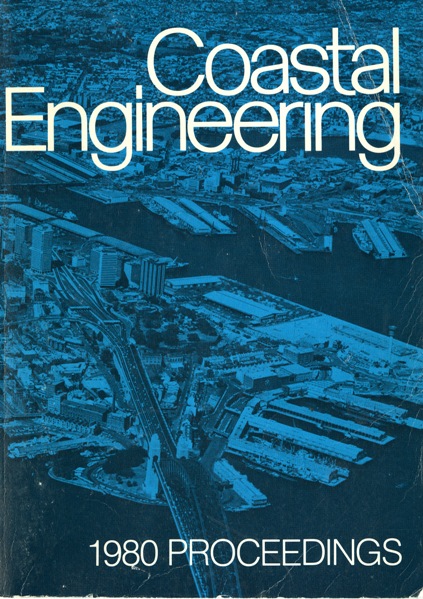Abstract
Tung-Kang Fishing Harbor, which is about 16 km to the south of Kaohsiung Harbor, is a river harbor on the south-west coast of Taiwan. This harbor is located at the estuary of the Niu-Pu River, which meets the Tung- Kang River and the Kao-Ping River on the north side, (see Fig. 1) The original north and south jetties were constructed in 1959. Because the entrance is located at the meeting of the three rivers and the water depth at the entrance is shallower than that in the breaking zone, the entrance is easily chocked with sand during the summer season when the south-west wind and waves are strong. Therefore, dredging is always necessary to maintain the required depth. On. the other hand, because of the increasing number of fishing boats and deeper draft, the port cannot function effectively. There-fore, how to keep the required water depth at the entrance and to obtain a wider and stable water basin is an urgent problem with this harbor. Based on the sounding of 1973, the littoral drift is mainly from the south. In the next year the construction of a 176 m long new south jetty was begun to protect the entrance and to facilitate the sedimentation study. In 1975, the Taiwan Fisheries Consultants was appointed to undertake the investigation and long-term planning work. This project includes littoral process study, planning, model test and design. Finally it is recommended that an adequate layout of south and north jetties can solve the problem of accretation of the harbor entrance. The purpose of this paper is to describe some aspects with emphasis on how to prevent the shoaling of the entrance channel located at the meeting of the rivers.
Authors retain copyright and grant the Proceedings right of first publication with the work simultaneously licensed under a Creative Commons Attribution License that allows others to share the work with an acknowledgement of the work's authorship and initial publication in this Proceedings.

